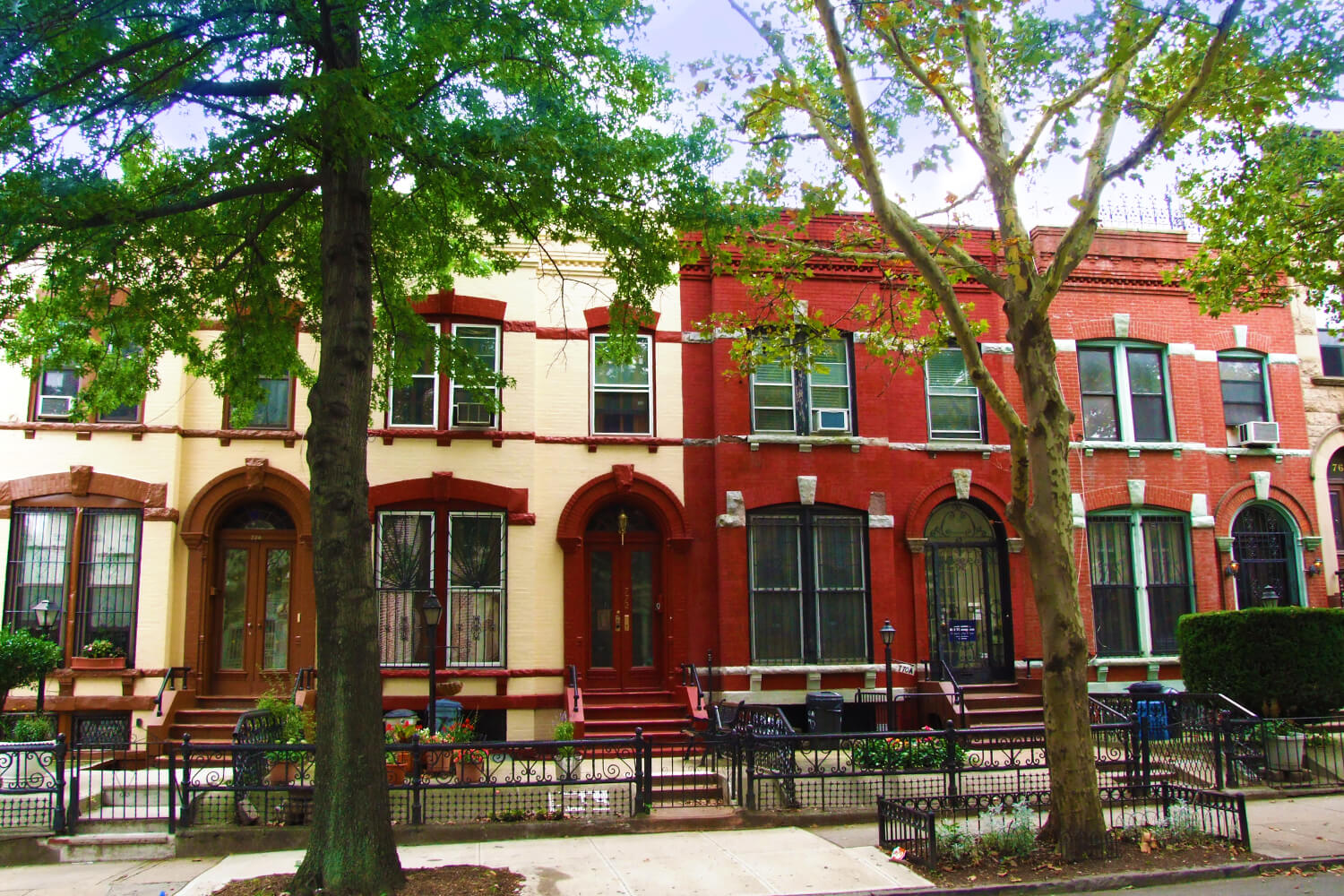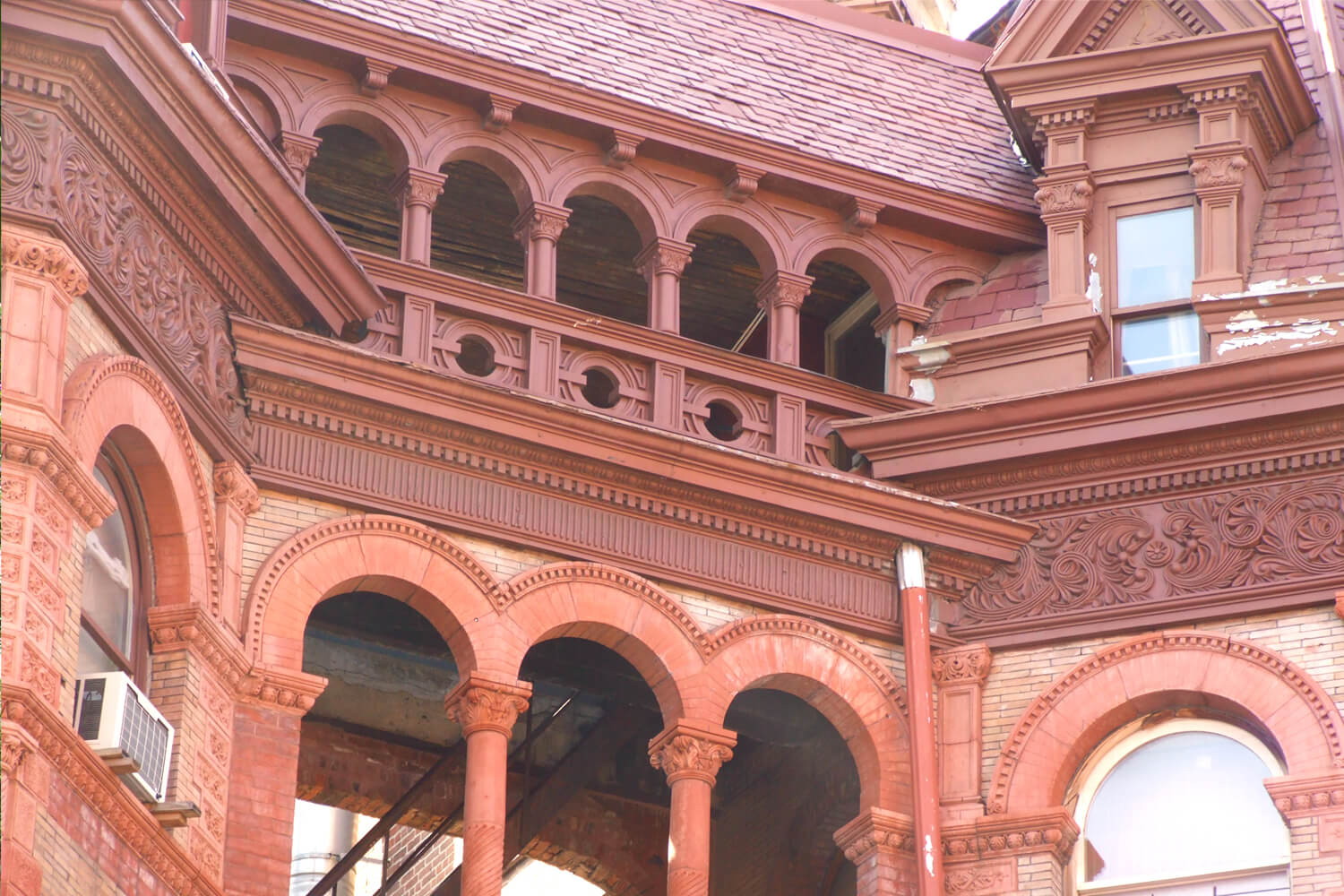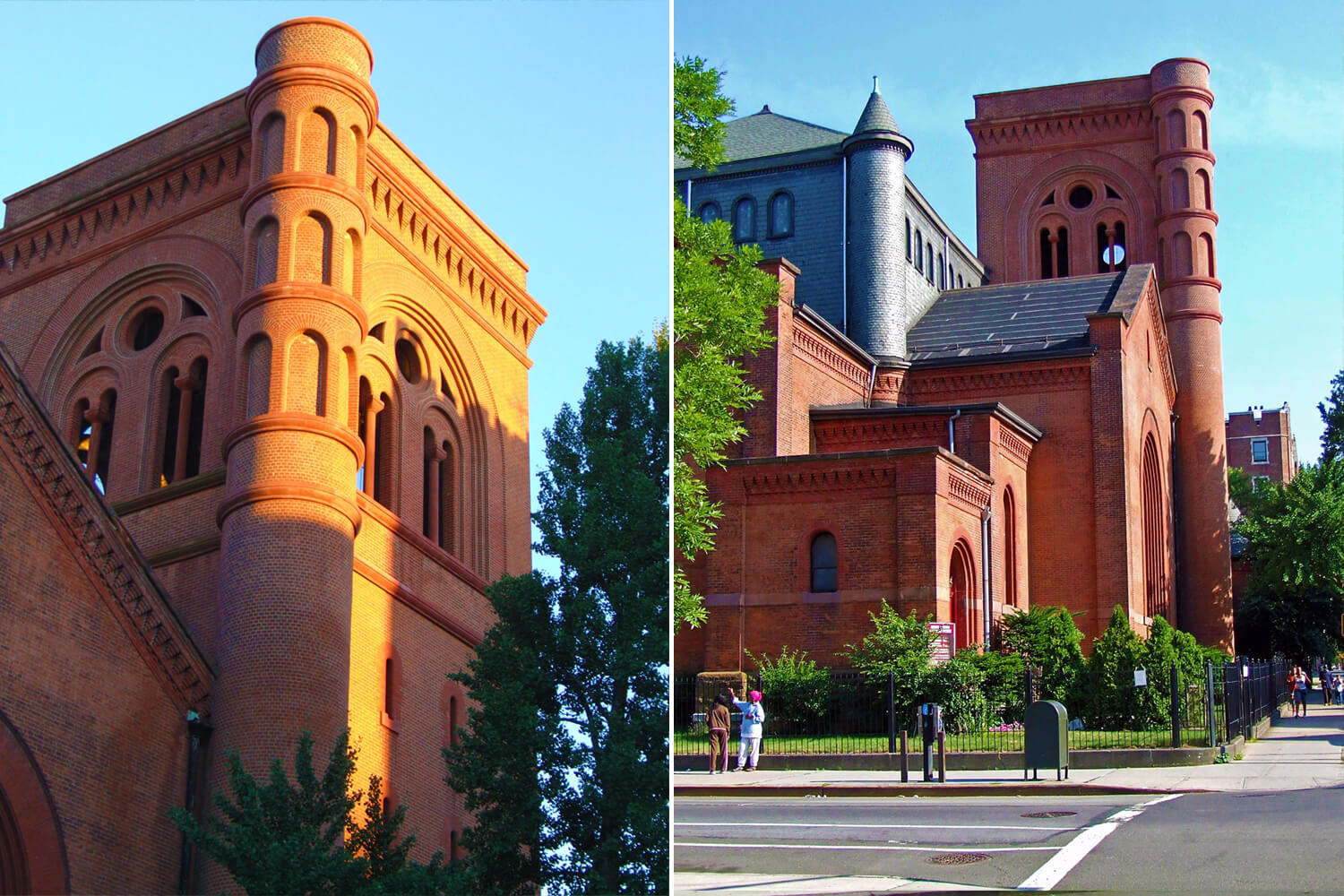Romanesque Revival: The Grand Architectural Style Loved by Brooklyn's Victorian Robber Barons
Confident, rugged and ostentatious — this architectural style was adored by Victorian robber barons and captains of industry. But Romanesque design also made its way into the row houses of our brownstone neighborhoods.

Homes on Decatur Street in Bed Stuy
Rugged, muscular and opulent, the Romanesque Revival style was perfectly suited to the power and might of Victorian robber barons, captains of industry, and grand money makers. It was a highly confident architecture for a confident time in history — even right here in Brooklyn.

The birth of Romanesque Revival and its rise to popularity
The look was inspired by 11th- and 12th-century medieval European castles with their arched windows and symmetrical facades. In the early 1800s, German architects decided to incorporate these medieval motifs in new construction, and the style soon evolved and spread to other countries, including England and the United States.
The first work of Romanesque Revival architecture in the United States is actually right here in Brooklyn — at the former Church of the Pilgrims, now Our Lady of Lebanon, in Brooklyn Heights. Designed by Richard Upjohn and finished in 1846, the fortress-like building is made of rough-cut stone and features arched windows.

But it wasn’t until that arched architectural style found its champion in Boston architect Henry Hobson Richardson that Romanesque Revival really took off in the United States. Richardson — known as the father of the Romanesque Revival style — also incorporated French and Spanish influences in his designs, an offshoot known as Richardson Romanesque.
His first Romanesque building, the Buffalo State Asylum for the Insane, was built in 1870. His masterpiece — Boston’s Trinity Church — was built not long after, from 1872-77.
Richardson’s style proved immensely popular throughout the country, and soon civic buildings, churches and huge mansions followed its aesthetic. A number of architects went on to further evolve and improve upon the style, most famously Louis Sullivan and Frank Lloyd Wright.

Round arches and rough-hewn stone typify the Romanesque Style
The architecture is characterized primarily by the use of brick and stone, with round Roman arches, embellished with squat columns, lines of windows, recessed entrances, towers with capped roofs, heavy massing, and often with the use of rusticated — that is rough hewn — stone blocks.
Important ornamental features of this style are carved Byzantine Leaf ornament, ornate stained glass windows and elaborate ornamental ironwork — all designed to soften the baronial nature of this architecture. At its grandest, Romanesque Revival is an architectural style tailor made for the wealthy. At its simplest, it is an elegant and sedate design perfect for a row house streetscape.

Romanesque Revival in Brooklyn
In New York — particularly in Brooklyn — row houses soon followed the Romanesque style of churches, public buildings and mansions. The rusticated look easily lent itself to the constraints of a smaller facade while still allowing for great variety in ornament and an abundance of detail.
Many of Brooklyn’s finest architects were masters of the Romanesque Revival style, especially at its zenith in the mid 1880s through early 1890s. According to the Landmarks Preservation Commission, Brooklyn has one of the largest concentrations of Romanesque Revival buildings in the United States.
Names that are commonplace in our historic districts: Montrose Morris, CPH Gilbert, James Naughton, PJ Lauritzen, the Parfitt Brothers, William Tubby, Mercein Thomas, JC Cady, Magnus Dahlander and George P. Chappell — as well as many more — all designed masterpieces of Romanesque Revival architecture throughout Brownstone Brooklyn.
Together they form a formidable and impressive body of work that helps define the uniqueness of our Brownstone neighborhoods.



[Photos by Suzanne Spellen unless otherwise noted]
Editor’s note: This post is an update of a post that originally ran in 2010. You can read it here.
Related Stories
Suzanne Spellen, aka Montrose Morris, Is Writing Brownstoner’s First Book
Queen Anne Style: America’s Flamboyant and Fantastic Architectural Melting Pot
Feast Your Eyes on the Luxurious Beauty of Aesthetic Movement Design
Email tips@brownstoner.com with further comments, questions or tips. Follow Brownstoner on Twitter and Instagram, and like us on Facebook.









What's Your Take? Leave a Comment